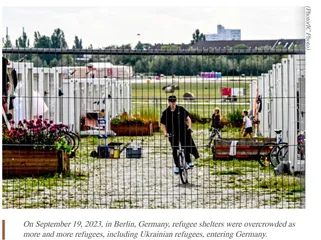EU Policy Shifts and the Trajectory of China-EU Relations Amidst the Two Conflicts
作者: Zhang Jian

The Ukraine crisis and the Israeli-Palestinian conflict (referred to as the Two Conflicts hereinafter) have profoundly changed the geopolitical and economic landscape of the EU. Internal and external challenges are becoming increasingly severe: the economy is stagnating; social disparity, political polarization and fragmentation are worsening; the security environment is deteriorating. Under various pressures, the EU has actively revised its internal and external policies, leading to increased downsides for China-EU relations. Nevertheless, China-EU relations still have robust internal dynamics and bright prospects for development.
Hurdles on the EU’s Development Path
The challenges facing the EU are present across the economic, political and security fields.
To start with, the EU economy is sluggish. The two decades since the beginning of the 21st century were lost by the EU. The EU economy has been subject to multiple crises that put its annual growth rate below half that of the United States. The economic output of some countries in the EU such as Greece and Italy has not recovered to pre-2008 financial crisis levels. The EU has been experiencing deindustrialization since the outbreak of the Ukraine crisis in 2022 because it not only lost the Russian market but also cheap Russian energy. As a case in point, Germany, Europe’s largest manufacturing power, sees a large number of firms cutting back production or even going bankrupt. Some even relocated to the United States because of substantial subsidies and lower energy prices there. With the Ukraine crisis grinding on, the EU economy is confronted with more problems incurred by the Israeli-Palestinian conflict that broke out in October 2023, such as inflation and the increased living costs. Although the conflict is yet to have substantive impact on the EU economy, it will deal more noticeable blows to the EU if the conflict escalates or spills over. In 2023, the Euro Zone, the core of the EU’s economy, grew only by 0.4 percent. Eleven EU member states entered into the negative growth territory, and Germany, the largest economy in the EU, declined by 0.3 percent. The optimistic estimate for Euro Zone is a modest 0.8% growth in 2024.
In terms of political challenges, the division and conflicts within the EU are widening. The EU is already plagued with the conflict between the north and the south and between the east and the west. In the context of Two Conflicts, three additional pairs of conflicts are becoming increasingly prominent. One is the conflict between supranational institutions like the European Commission and their member states. Since the Two Conflicts began, the European Commission has been active and vocal, often setting the tone ahead of the member states, vigorously promoting sanctions against Russia, trying to lead the EU’s China policy, and accumulating power and wealth under the guise of regional integration. These conducts have riled the feathers of many member states.
Another pair of conflict is between the elite and the masses. The EU’s so-called elite pursue political correctness, suppress dissenting opinions, heap labels and criticism randomly, and dominate the narrative and discourse power within and outside the EU. The legitimate demands and different opinions of ordinary people are ignored and even dismissed. For example, the rising cost of living, refugee issues, energy and food shortage caused by the crisis in Ukraine severely affect the lives of the middle class and those at the bottom in the EU, but these are brushed aside by the elite as a due price. Farmers have protested across the Europe due to these issues since the beginning of 2024. Protests and demonstrations in other industries also broke out one after another. The rise of the far-right in Europe also has something to do with this background.
The third pair of conflict is between Germany and France. The Two Conflicts have amplified and exacerbated the existing disagreements between the two countries to the extent that they became more difficult to reconcile. For example, Germany and France hold divergent opinions on issues such as whether to support or oppose Ukraine joining NATO, whether to promote strategic autonomy or depend on the United States, and whether to support the Palestinian cause or unconditionally support Israel. These differing positions between Germany and France make EU difficult to reach consensus.
In terms of security, the EU’s security predicament is getting more acute. Since the outbreak of the Ukraine crisis, Europe has increasingly been embroiled in it with deepening participation. Europeans are aware of the risk of escalation. For example, despite facing pressure, German Chancellor Olaf Scholz still refuses to provide Ukraine with powerful Taurus cruise missiles, on the ground that it could escalate the war or even directly pit Germany against Russia. French President Emmanuel Macron’s talks about not ruling out sending troops to the battlefield in Ukraine have alarmed other European countries. Three years into the Ukraine crisis, both the United States and Europe are growing weary of providing aid to Ukraine. European countries think the situation in Ukraine is not promising because Russia is gaining an upper hand on the battlefield. Britain, Denmark, Sweden, Poland and other European countries state that they must be prepared for a gruelling battle, showing Europe’s growing concerns about Russia’s potential to defeat Ukraine. Despite concerns over Ukraine’s loss to Russia, which will threaten European security order and territorial security, Europe finds itself unable to alter the situation.